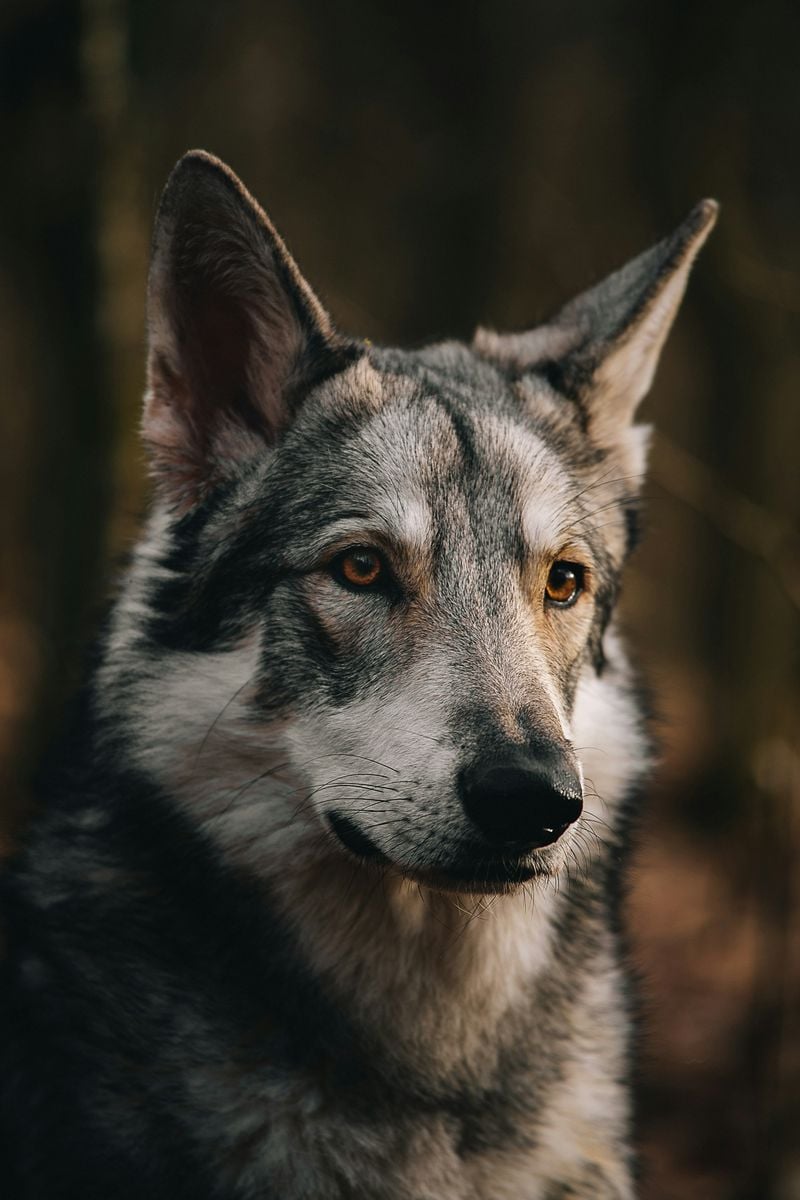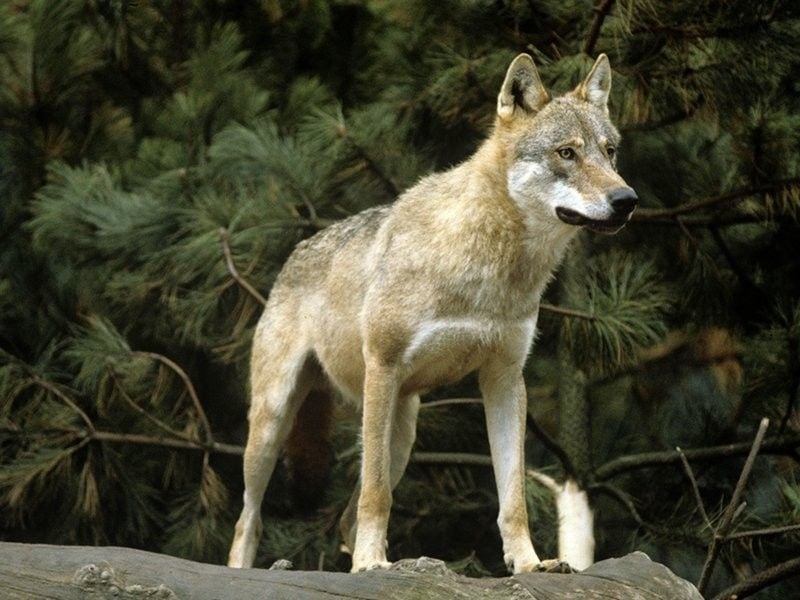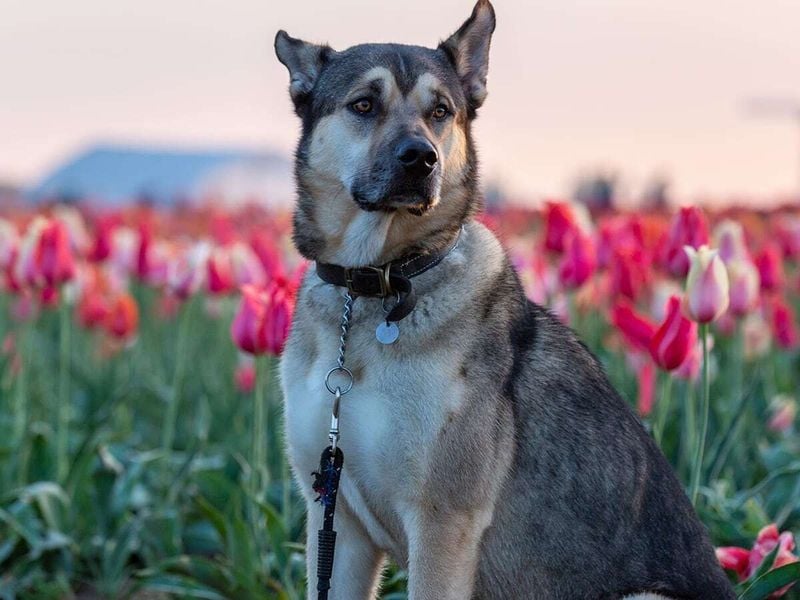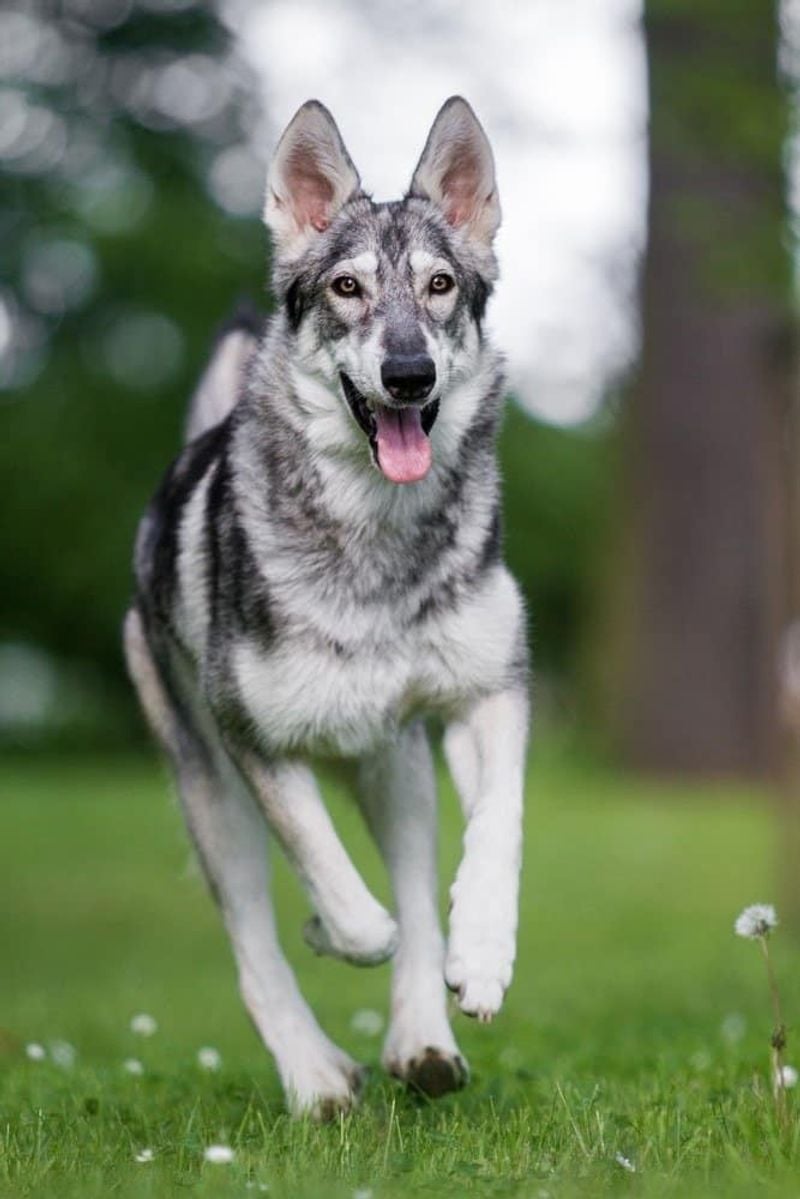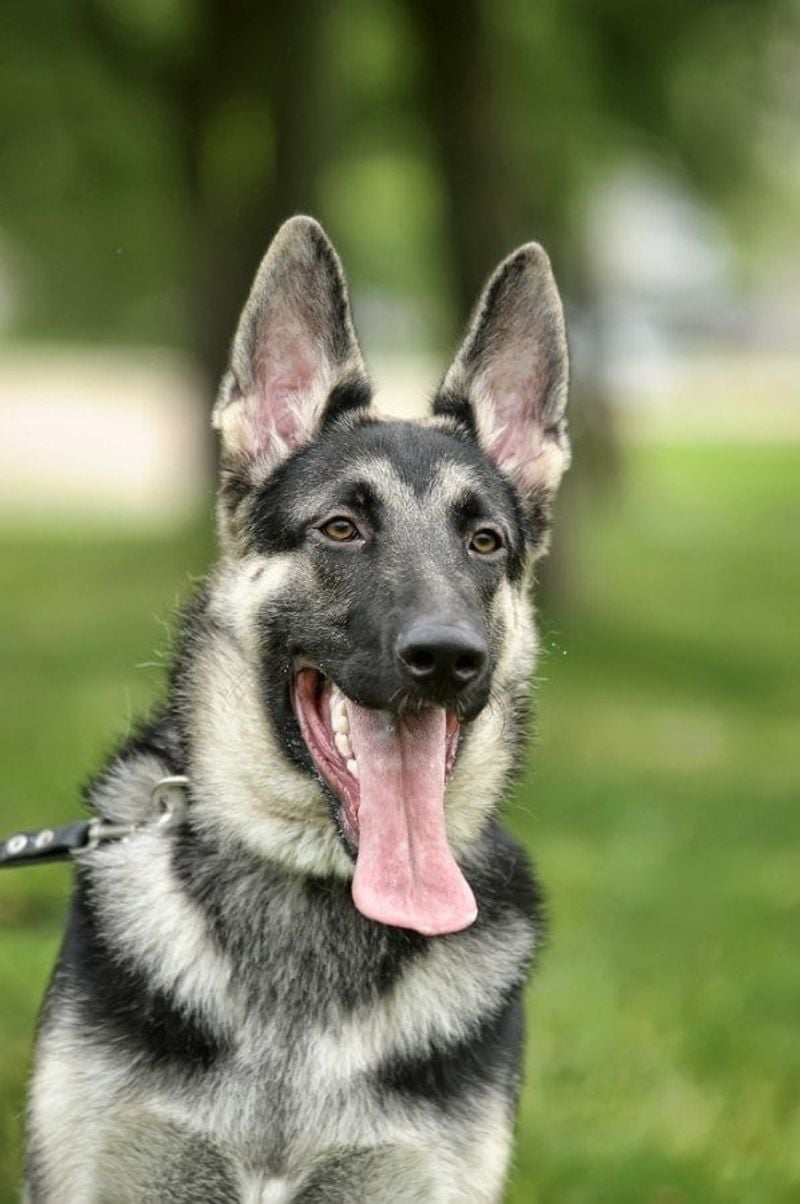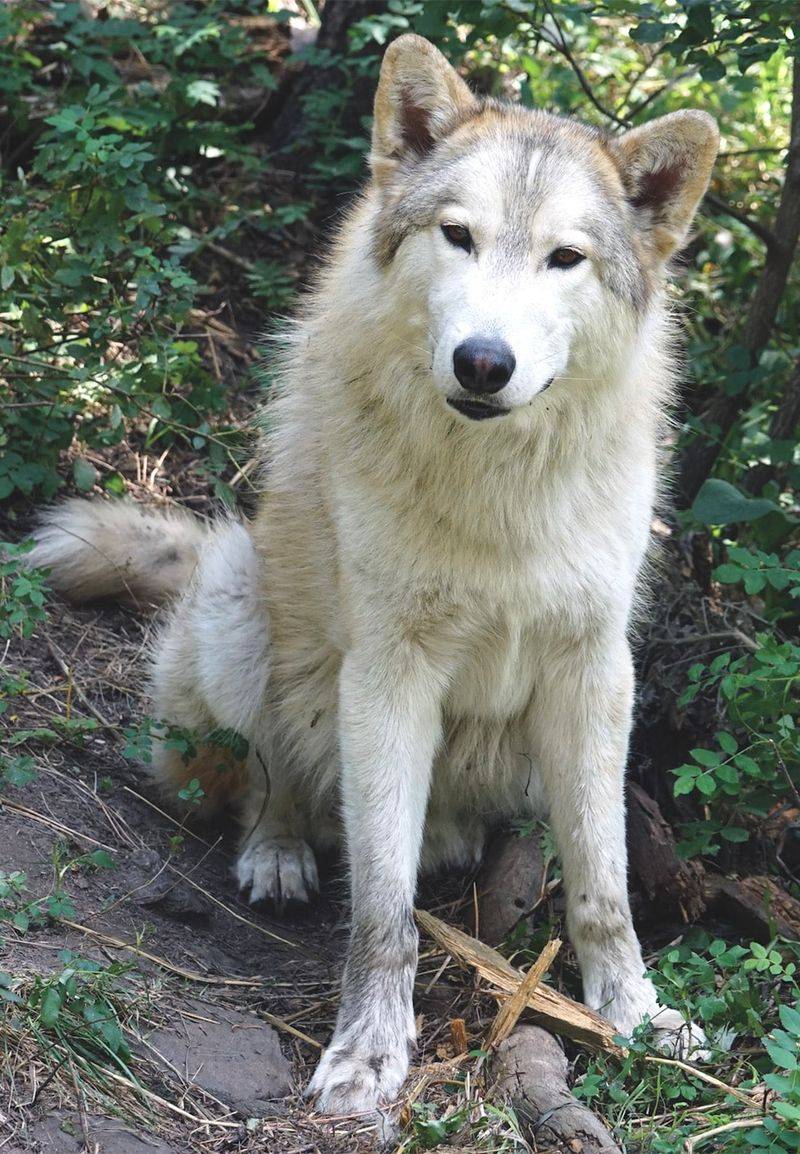10 Dog Breeds That Are Just One Pawprint Away From Their Wolf Ancestors
Have you ever looked at your dog and caught a glimpse of something wild—something ancient and untamed just beneath the surface? While all modern dogs trace their roots back to wolves, some breeds still walk the line between domestication and wilderness. Whether it’s in their piercing eyes, dense coats, or aloof, instinctual behavior, these breeds remind us just how close our furry companions are to their wild ancestors.
Through selective breeding—and in some cases, direct wolf-dog hybridization—certain dogs have retained remarkable physical and behavioral traits reminiscent of wolves. They carry the loyalty, intelligence, and companionship we love in domestic dogs, but with a touch of the wild: a presence that feels more primal, more majestic, and a little less predictable.
These aren’t your average lapdogs. These are the breeds that still echo the call of the forest, the snow-covered mountain, and the ancient pack. Let’s explore 10 dog breeds that are just a step away from wolves.
1. Czechoslovakian Wolfdog: The Military Experiment
Born from a 1950s military experiment, the Czechoslovakian Wolfdog blends German Shepherd discipline with Carpathian wolf wildness. Scientists originally created these remarkable animals to patrol Czechoslovakia’s borders, combining wolf stamina with dog trainability.
These athletic companions display unmistakable wolf features—amber eyes, thick gray coat, and distinctive facial masks. Their powerful bodies move with the efficient, ground-covering gait of their wild ancestors.
Despite their intimidating appearance, properly socialized Wolfdogs form deep bonds with their families. They require experienced owners who understand their independent nature and provide ample exercise and mental stimulation. A bored Czechoslovakian Wolfdog quickly becomes a destructive one!
2. Saarloos Wolfdog: The Dutch Wolf Hybrid
Created by Dutch breeder Leendert Saarloos in the 1930s, this striking breed emerged from crossing German Shepherds with female wolves. Saarloos wanted to improve working dogs by reintroducing wolf characteristics—a controversial experiment that produced animals with remarkable wolf-like appearance.
Their distinctive features include a thick winter coat, wedge-shaped head, and almond eyes that seem to look right through you. Unlike their wild ancestors, Saarloos Wolfdogs typically display shy, reserved personalities rather than aggression.
Living with these canines requires patience and understanding. They form intense bonds with their chosen people but often remain suspicious of strangers. Their wolf heritage makes them independent thinkers who respond poorly to harsh training methods.
3. Lupo Italiano: Italy’s Protected Wolf-Dog
Shrouded in mystery, the Lupo Italiano (Italian Wolfdog) emerged in the 1970s through controlled crossings between wild Apennine wolves and German Shepherds. The Italian government strictly regulates these rare canines, primarily using them for search and rescue operations in rugged terrain.
Standing tall with powerful shoulders and intelligent eyes, these dogs combine wolf endurance with canine trainability. Their dense coats—typically gray or brown—protect against harsh mountain conditions where they excel at tracking lost hikers.
Unlike most breeds, you won’t find Lupo Italianos in typical homes. The Italian School of Veterinary Medicine maintains breeding control, placing most dogs with forest rangers and mountain rescue teams. Their exceptional scenting abilities and sure-footedness make them invaluable in emergency situations.
4. Kunming Wolfdog: China’s Working Wonder
Developed in the 1950s in China’s Yunnan province, the Kunming Wolfdog serves as the backbone of Chinese military and police forces. These intelligent canines emerged from crossing German Shepherds with local wolf-dogs, creating a versatile working breed perfectly adapted to China’s diverse environments.
Sharp intelligence shines in their expressive eyes, while their athletic bodies move with wolf-like efficiency. Their double coats—typically tan with black saddle markings—shed profusely twice yearly, revealing their northern ancestry.
Kunming Wolfdogs excel in detection work, tracking, and patrol duties. Their exceptional problem-solving abilities sometimes surprise even experienced handlers. Though relatively unknown outside Asia, these dogs combine the trainability of German Shepherds with the hardiness and adaptability of their wolf ancestors.
5. Tamaskan: The Wolf Lookalike Without Wolf Blood
Howling at the moon with eerie authenticity, the Tamaskan achieves remarkable wolf resemblance without actual wolf ancestry. Developed in Finland during the 1980s, breeders combined Siberian Huskies, Alaskan Malamutes, and German Shepherds to create the ultimate wolf doppelgänger.
Their striking appearance features the classic wolf silhouette—athletic build, erect ears, and bushy tail. Most sport wolf-gray coats with facial masks that make even wildlife experts look twice. Despite their wild looks, Tamaskans typically display friendly, trainable temperaments.
Family-oriented and sociable, these dogs lack the extreme shyness or independence of actual wolf hybrids. They excel in dog sports like agility and sledding while forming close bonds with their human pack. For those wanting wolf aesthetics without wolf challenges, the Tamaskan offers an appealing compromise.
6. Northern Inuit Dog: The Game of Thrones Direwolf
Gaining worldwide fame as the direwolves in HBO’s “Game of Thrones,” Northern Inuit Dogs captivate with their primeval appearance. Developed in the 1980s in the UK, these dogs blend German Shepherds, Siberian Huskies, and various Inuit dogs to create animals with striking wolf aesthetics but domestic temperaments.
Their powerful frames carry thick double coats in wolf-like colors—gray, sable, and black with distinctive facial markings. Intelligent eyes reveal their thoughtful nature and assessment of new situations.
Despite their intimidating looks, Northern Inuits typically display gentle, family-oriented personalities. They form strong bonds with children but require consistent training from puppyhood. Their pack-oriented nature means they suffer from separation anxiety if left alone frequently. Active families provide the ideal environment for these social, energetic companions.
7. Utonagan: The Spirit Wolf of Legend
Named after a Native American tale meaning “spirit of the wolf,” the Utonagan emerged in England during the 1980s. Breeders combined Alaskan Malamutes, German Shepherds, and Siberian Huskies to create companions with wolf appearance but thoroughly domestic temperaments.
Their stunning wolf-like features include masked faces, erect ears, and thick coats in various shades of gray, white, and sable. Unlike some wolf-like breeds, Utonagans typically display outgoing, friendly personalities that make them excellent family companions.
Highly social creatures, they form strong attachments to their human packs and generally get along well with other animals. Their intelligence demands mental stimulation alongside physical exercise. Without proper outlets for their energy and brainpower, these beautiful dogs can become destructive problem-solvers, figuring out everything from complex latches to refrigerator doors!
8. American Alsatian: The Gentle Giant Wolf
Masterminded by breeder Lois Schwarz in the 1980s, the American Alsatian began as the “Alsatian Shepalute”—a project to create large, wolf-like companion dogs with gentle temperaments. Unlike breeds with actual wolf content, these dogs combine German Shepherds, Alaskan Malamutes, English Mastiffs, and Great Pyrenees.
Their massive frames carry thick coats in wolf colors—silver, black, and golden-gray. Large heads house intelligent eyes that watch the world with calm assessment rather than predatory intensity.
Bred specifically for companionship rather than working ability, American Alsatians display remarkably low-key personalities for such wolf-like animals. They form deep bonds with their families but lack the hyperactivity of many northern breeds. Their gentle nature makes them suitable for therapy work despite their intimidating size and wolf-like appearance.
9. Wolf-Dog Hybrids: The Controversial First Generation
Walking the razor’s edge between wild and domestic, first-generation wolf-dogs represent the most controversial category on our list. These animals result from direct breeding between wolves and dogs, creating unpredictable combinations of wolf and dog traits that challenge even experienced handlers.
Their appearance varies widely depending on the dog breed used, but most display unmistakable wolf characteristics—almond eyes, large feet, straight tails, and distinctive movement patterns. Behaviorally, they often exhibit conflicting instincts that create internal conflict.
Legal in some areas but banned in others, these animals require specialized knowledge and facilities. Their wild instincts can emerge unexpectedly, particularly during maturity or breeding seasons. Responsible ownership demands extensive research, proper containment systems, and understanding that these animals are neither wolves nor dogs, but something uniquely in-between.
10. Alaskan Noble Companion Dog: The Designer Wolf
Relatively new to the canine world, the Alaskan Noble Companion Dog represents a modern attempt to create wolf appearance without wolf genetics. Breeder Ann Dresselhaus began developing these dogs in the 1990s, combining German Shepherds, Alaskan Malamutes, Great Pyrenees, and other breeds.
Their striking appearance features the classic wolf silhouette—balanced proportions, wedge-shaped heads, and thick coats in wolf colors. Unlike actual wolf-dogs, these animals were selectively bred for stable temperaments suitable for family living.
Still quite rare, these dogs combine the majestic appearance of wolves with the reliability of domestic dogs. They typically form strong bonds with their families while maintaining some independence. Active households provide the best environment for these intelligent animals who require both physical exercise and mental challenges to thrive.


